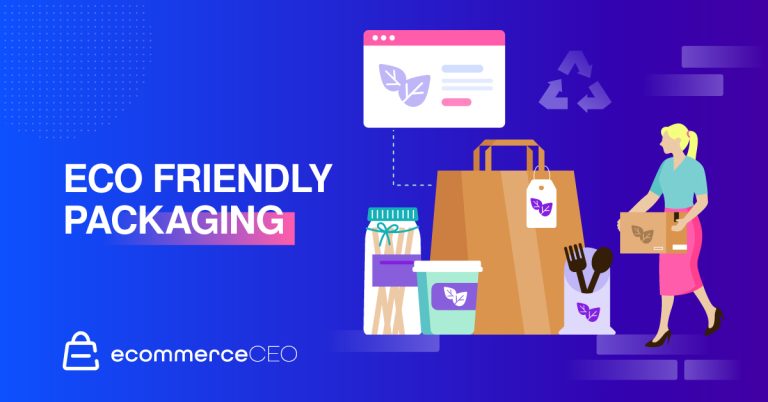Since early February this year, online orders and referrals for fashion brands have been steadily rising, up 58% and 66%, respectively, reports The Drum.
Statista also reveals that fashion is the largest business-to-business (B2C) ecommerce market segment and will reach a total market size of $1.164.7 billion by the end of 2025.
However, because consumer behaviors have fundamentally changed since the pandemic, many fashion and apparel brands have struggled to adapt their strategies to increase profitability.
In this article, we’ll discuss the top three consumer trends in the fashion and apparel industry and share some tips to help brands capitalize on these changes.
1. Consumers Shop Both In-Store and Online
The pandemic created a surge in online shopping for almost all industries, especially fashion and apparel. As retailers reopen their brick-and-mortar spaces, however, many consumers started returning to in-store shopping or combining both online and offline when buying clothes.
According to Bazaarvoice’s Shopper Experience Index 2021 report, 47% of respondents say to browse in-store, buy in-store was their favorite way of buying, followed by 43% saying they’d browse and buy on a brand or retailer website with home delivery. Only about 50% of shoppers prefer online shopping over in-store for the next year, globally.
These findings align with Forrester’s research, showing that despite feeling underwhelmed by the return to in-store shopping, consumers, especially Gen Zers, will continue to rely on in-store shopping options for convenience, ease, speed, and human touch.
What Brands Should Do
Offer a Seamless Shopping Experience
Offer expedited omnichannel options like:
- Buy online, pick-up in-store (BOPIS or click-and-collect);
- Buy online, return in-store (BORIS);
- Curbside pick-up and returns; or
- Buy in-store, return online.
Furthermore, they should ensure the shopping experience is consistent and seamless across channels.
Optimize and Enhance
Optimize product detail pages and digital search to assist shoppers in finding the products that fit their needs and enhance the online shopping experience.
Think about enhanced content, product finders, or lifestyle quizzes. You may also want to try artificial intelligence- (AI) based digital stylists and chatbots to give feedback on outfit choices or suggest alternatives to make your shopping experience more personal.
2. Consumers Rely on Social Media for Product Discovery
More and more clothing shoppers are using social media platforms for product inspiration and discovery. In the State of eCommerce Discovery in the New Normal report, Syte.io found that shoppers are deeply influenced by social media when searching for new trends in fashion.
The NPD Group recently surveyed consumers to determine how they learn about or discover fashion brands and retailers. They found that Facebook, Instagram, and Pinterest landed at the top of this list, educating 41%, 35%, and 21% of consumers about brands, respectively.
However, Heuritech’s research emphasized that Facebook, Instagram, and Pinterest aren’t the only social media platforms inspiring changes in the fashion and apparel industry. Weibo, Pinterest, TikTok, and YouTube increasingly play big roles as well because millennials and Gen Zers have become both fashion influencers and influencees on these platforms.
In sharing with Common Thread Collective, Marco Marandiz, Ecommerce DTC Strategist even strongly argued that:
“Websites will become less relevant and social media channels — TikTok, Instagram, Twitter, YouTube — those are going to be far more powerful for driving sales directly to a specifically built site to make a sale. There won’t be the whole lifestyle photography and product descriptions and all of that stuff.”
What Brands Should Do
Build a Community
Determine which social media platforms your customers show up on and build a solid community on those sites. When doing that, think about optimizing your profile, highlights, brand image, brand voice, and the like to make your brand searchable and recognizable.
Use Shopping Features
Take advantage of shopping features (i.e., stories, shoppable posts, paid ads, hashtags) on social media sites to promote your products.
Make Partnerships
Partner with fashion influencers and celebrities to reach out to more potential customers, increase brand awareness, and drive sales. You can ask them to post images or videos wearing your products, share reviews, run giveaways, etc.
3. Consumers Increasingly Favor Transparent and Purposeful Brands
Another critical trend in the fashion and apparel industry is that today’s consumers want to buy from brands with a mission. They expect brands to care about employees, fight for social and environmental issues, and be transparent about what they’ve done to protect the planet.
Here are some statistics you should keep in mind:
- In the State of Fashion 2021 report, McKinsey found that 55% of surveyed consumers expect brands to care for employees’ health in times of crisis. About 66% of respondents said they’d stop or significantly reduce shopping at a brand if they found the brand wasn’t treating its employees or suppliers’ employees fairly.
- According to the Fashion Transparency Index 2021 conducted by Fashion Revolution, most brands and retailers lack transparency on social and environmental issues. More than half (54%) of brands score 20% or less.
- London Research and Trustpilot’s latest international survey found that 82% of consumers reveal they would definitely (31%) or probably (51%) stop buying from a brand found to be lacking ethical standards.
- Boston Consulting Group reports that more consumers prefer second-hand clothing as doing this allows them to fill their wardrobes sustainably with unique, value-friendly items. About 70% of pre-owned buyers “like the sustainable aspect” of second-hand consumption, compared with 62% in 2018.
What Brands Should Do
Be Transparent
Choose sustainable materials whenever possible and be transparent about them. Publish information about your materials and manufacturing process on the website and regularly post it on social media.
You can also share videos of how you source materials and manufacture clothing to strengthen your trust with consumers.
Get Creative With It
Be creative. For example, allow customers to exchange old clothing items for new ones. You can upcycle these old items into new products. You can also share tips to guide customers on making clothes last longer and how to reuse and recycle them.
Give Back and Be Intentional
Give back to the community with practical actions. Identify a cause that aligns with your brand and develop a strategy to support that cause.
If you decide to donate a part of your sales to charity, think about what charity you want to partner with, who exactly you’re trying to help, how you can get your customer involved in your mission, and more.
Also, be clear about your message, for example, “one purchase = one tree planted” or “one T-shirt = one donated to people in need.”
Is Your Brand Ready for These Consumer Trends?
The pandemic has brought a lot of changes in fashion shoppers’ behaviors. But as long as you keep a close eye on the three consumer trends above, determine what that means for your brand, and adapt quickly, you can win consumers’ hearts and turn them into brand advocates. For any brand that knows how to capitalize on these trends, the rewards can be substantial.
Download our 2021 Consumer Research report to gain better insight into changes in consumer behavior and how you can strategize to better meet their needs.


![15 Ways for Effectively Selling Electronics in 2023 [Top Websites]](https://technobabble.com.au/thegatewaynetau/wp-content/uploads/sites/11/2023/01/15-ways-for-effectively-selling-electronics-in-2023-top-websites-768x402.png)
![[Guest Blog] Holiday Prep: How to Diversify your Shipping](https://technobabble.com.au/thegatewaynetau/wp-content/uploads/sites/11/2021/03/guest-blog-holiday-prep-how-to-diversify-your-shipping.jpg)


